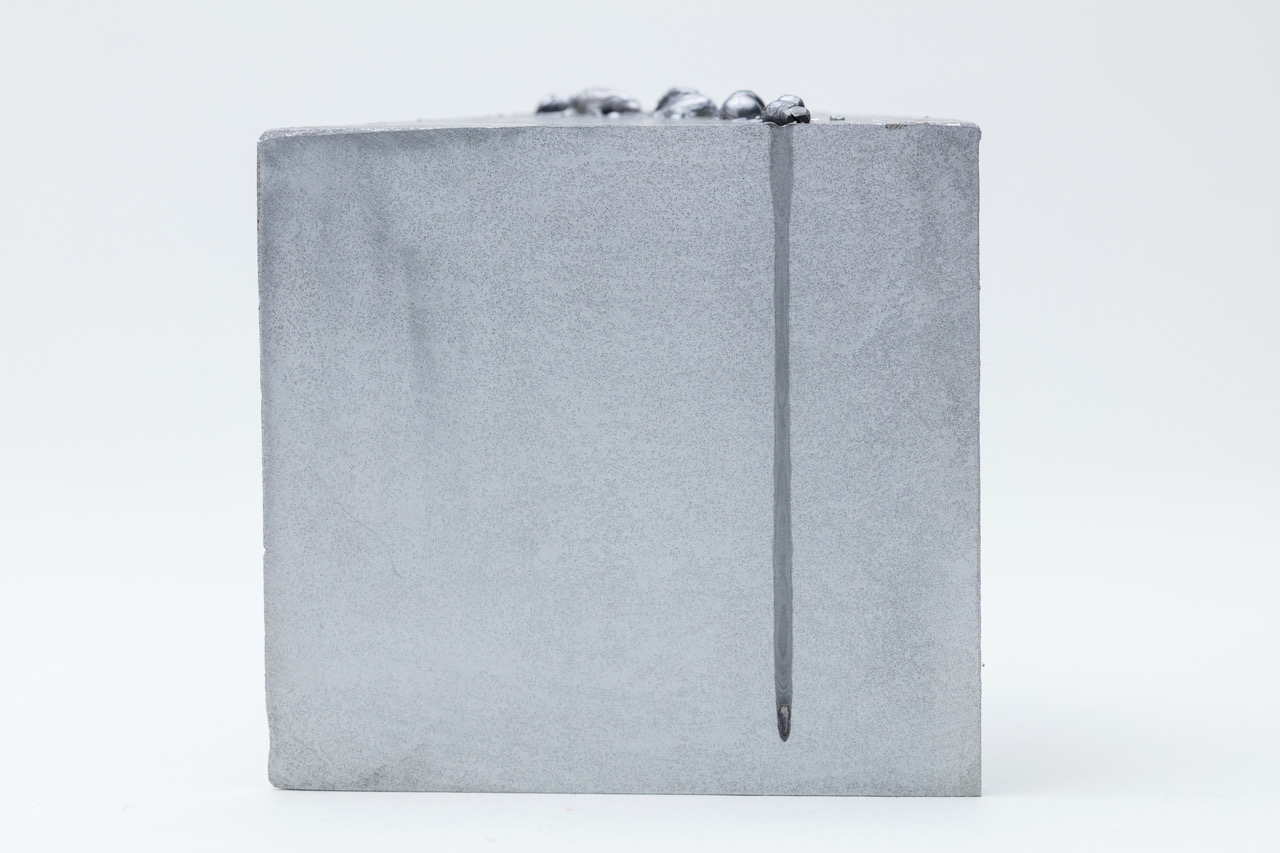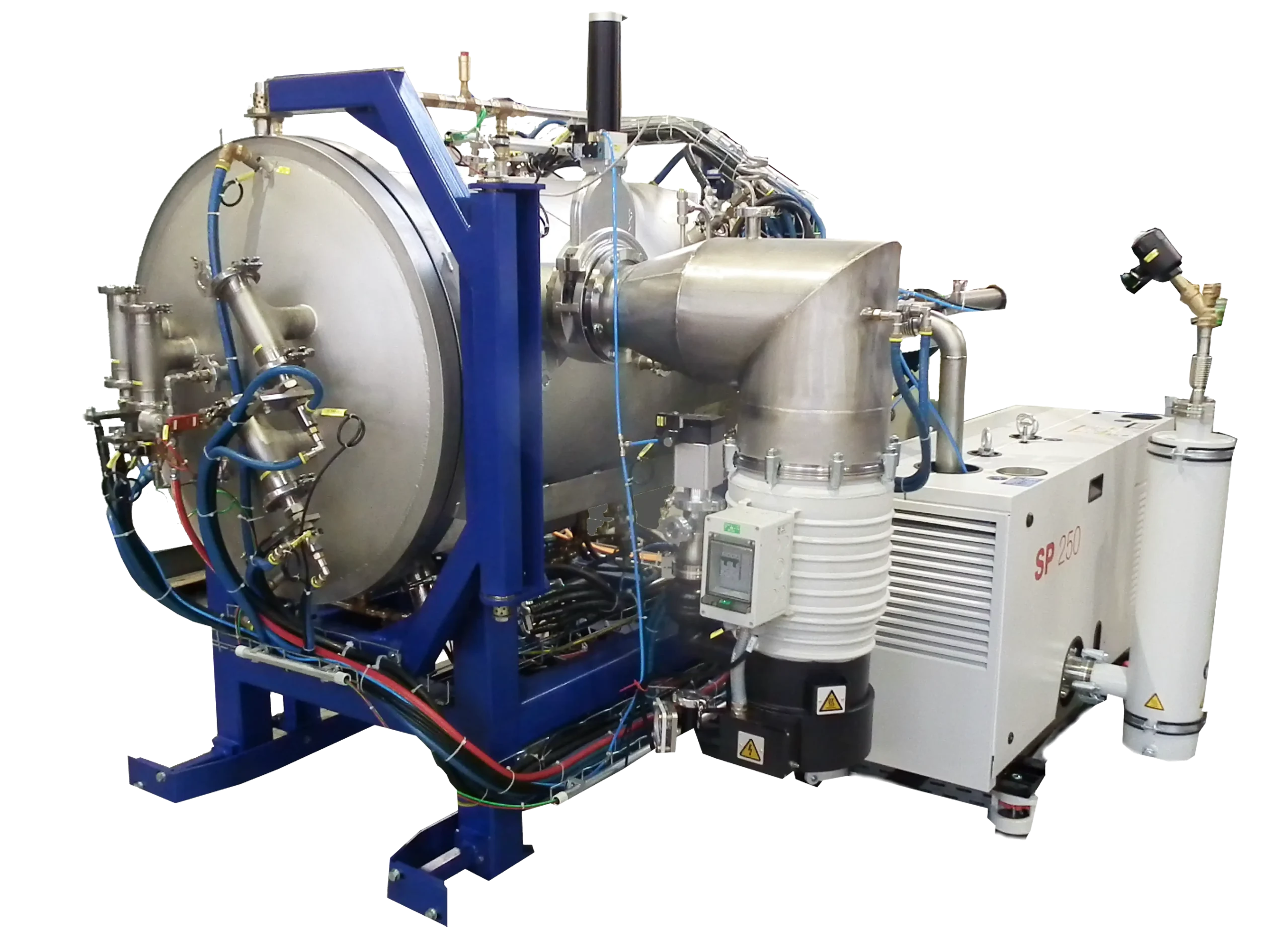Semiconductor production machinery often requires high-strength, corrosion-resistant aluminum structures with excellent durability and dimensional stability. 5083 aluminum alloy, part of the 5000 series (Al-Mg), is a widely used material due to its exceptional corrosion resistance, high strength in the as-welded condition, and ease of machining. Electron Beam Welding (EBW) is an ideal process for joining thick-walled casted 5083 aluminum components, ensuring high-quality, defect-free welds without the need for post-weld heat treatment.
This article explores the key aspects of EBW for 5083 aluminum alloy, highlighting the benefits, preparation steps, and process parameters for achieving superior weld integrity.
Why EBW for 5083 Aluminum Structures?
Electron Beam Welding provides several advantages for welding thick-walled 5083 aluminum alloy components used in semiconductor applications (ASM International, 1991):
- Deep Penetration – Achieves full penetration welds on thick-walled structures, reducing the need for multiple passes.
- Minimal Distortion – The highly focused electron beam reduces heat input and minimizes residual stresses.
- Vacuum Environment – Ensures a clean, oxide-free weld, preventing contamination and porosity.
- No Post-Weld Heat Treatment Required – 5083 aluminum does not require additional heat treatment post-welding, making EBW a highly efficient process.
As noted, “Electron beam welding is well-suited for aluminum alloys such as 5083 due to its ability to produce high-quality welds while maintaining the alloy’s mechanical integrity” (Adam et al., 2011).
Material Selection: 5083 Aluminum Alloy in Stress-Relieved (SR) Condition
Why 5083 Alloy?
5083 aluminum is a non-heat-treatable alloy primarily strengthened through strain hardening rather than precipitation hardening. It offers excellent corrosion resistance, high mechanical strength, and superior weldability, making it ideal for semiconductor machinery applications. Given its widespread use in large, thick-walled castings, ensuring dimensional stability and minimal residual stress is essential.
Preferred Stress-Relieved (SR) Condition for Large Castings
Most large casted aluminum structures for semiconductor equipment are supplied in a stress-relieved (SR) conditionto mitigate distortion during machining and operational use. The SR condition is achieved primarily through thermal stress relieving, while additional advanced treatments may be considered based on application-specific requirements.
Methods of Stress Relief:
- Thermal Stress Relieving (Annealing at ~300–350°C) – A widely used method where the casting is heated to a moderate temperature and held for a specified time to relieve internal stresses. Slow cooling further ensures uniform stress distribution, preventing cracking or warping during machining and service.
- Hot Isostatic Pressing (HIP) – Optional Due to High Cost – HIP is highly effective in closing internal porosity, increasing density, and improving mechanical integrity, particularly in large or complex castings. However, due to its high processing costs and size limitations of HIP furnaces, HIP is typically reserved for smaller parts and applications where flawless internal structure and fatigue resistance are critical.
Multiple Stress Relief Steps for Precision Machining
Depending on the extent of machining, multiple intermediate stress relief steps may be conducted throughout the manufacturing process to prevent warping during ultra-precise machining. This is particularly important when machining large, high-precision components where residual stresses, if not managed properly, can lead to dimensional instability and deformation in the final product.
Final Stress Relief for Lithography Applications
For semiconductor lithography applications, a final stress relief or bake-out process in either an air atmosphere or a high-vacuum oven may be required to ensure vacuum integrity (ASM International, 1991). This process not only eliminates residual stresses but also removes any potential trapped gases or contaminants, ensuring that the component meets the stringent requirements for vacuum-sealed environments.
By selecting an appropriate stress-relief treatment, manufacturers can ensure that 5083 aluminum castings maintain dimensional accuracy, mechanical strength, and long-term stability, all of which are essential for high-performance semiconductor manufacturing applications.
Steps for EBW on 5083 Aluminum Alloy
Cleaning the Workpiece
Proper cleaning is essential for achieving defect-free EB welds:
- Degreasing – Remove grease and oils using solvents such as acetone or isopropyl alcohol.
- Final Cleaning – Rinse thoroughly with deionized water and dry using clean, lint-free cloths or compressed air.
Since 5083 aluminum components are machined prior to welding, there is no need for a separate oxide removal step. The thin oxide layer is naturally removed by the high energy density of the electron beam, which blasts away the surface oxide when striking the material.
Edge Preparation
- Machined butt joints are ideal for EBW, ensuring tight fit-up for full penetration.
- No need for beveled or tapered edges – The high energy density of the electron beam allows for deep penetration without additional edge modifications (Adam et al., 2011).
Welding Parameters Optimization
- Beam Energy – Adjust to achieve full penetration without excessive vaporization.
- Travel Speed – Optimize to control heat input and prevent excessive melting.
- Beam Focus – Precisely control the beam for uniform, defect-free welds.
The best way to ensure repeatability of superior weld seam quality is by integrating advanced welding systems, such as those offered by pro-beam (pro-beam Group, 2020). These systems include:
- Electron Optical Monitoring System (ELO®) – Provides real-time, high-resolution imaging in detail, edges, joints and to evaluate visually the quality of the weld surface caterpillar.
- Automatic Seam Tracking – Operator-independent and reproducible positioning of the electron beam for significantly higher cycle times.
- Online ELO® – Offers real-time monitoring of the welding process, enabling operators to make instant adjustments to welding parameters, reducing errors and material waste.
This integrated system minimizes defects, enhances accuracy, reduces downtime, minimizes the heat impact zone, and enables seamless data logging for process optimization.
Applications in Semiconductor Machinery
Electron Beam Welding is a critical process for fabricating:
- Structural Frames and Supports – High-strength aluminum components requiring dimensional stability.
- Vacuum Chambers and Enclosures – Thick-walled, corrosion-resistant structures ensuring vacuum integrity.
- Thermal Management Systems – Leak-proof welded structures integrating cooling systems for semiconductor production.
Conclusion
Electron Beam Welding is an optimal process for joining 5083 aluminum alloy components, particularly in semiconductor applications where corrosion resistance, mechanical stability, and precision are essential. Unlike heat-treatable aluminum alloys, 5083 in the SR condition offers excellent weldability without the need for pre-weld or post-weld heat treatments. EBW ensures deep penetration, minimal distortion, and superior joint quality, making it an ideal solution for thick-walled aluminum structures in high-performance industries.
By adhering to rigorous cleaning, preparation, and process controls, manufacturers can achieve high-quality, defect-free welds that support the next generation of semiconductor technology.
References
- ASM International. (1991). ASM Handbook, Volume 4: Heat Treating. Materials Park, OH: ASM International.
- Adam, V., Clauss, U., Dobeneck, D. v., Krüssel, T., & Löwer, T. (2011). Electron Beam Welding – Fundamentals of a Fascinating Technology. Germany: pro-beam AG & Co.
- pro-beam Group. (2020). Electron Beam Process Monitoring and Control.









